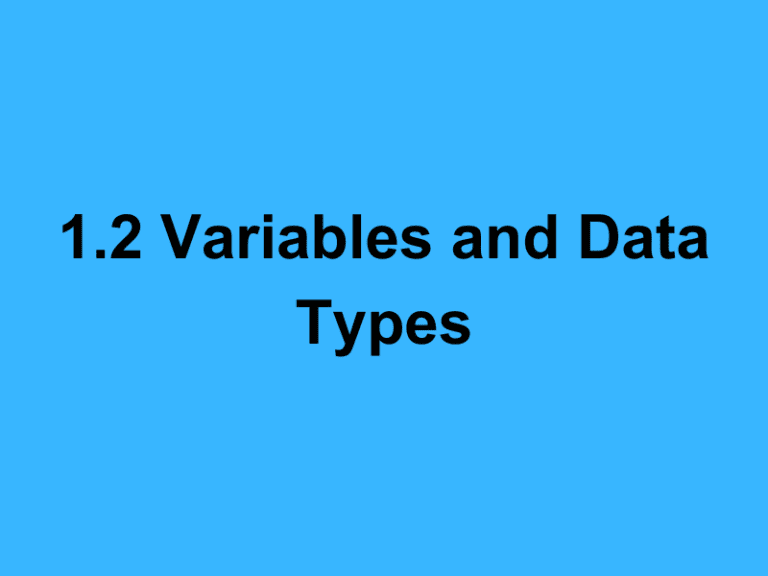In programming, variables and data types are fundamental concepts that store and manage data within a program. Let’s explore these concepts, focusing on Java as our programming language, which is widely used in education, such as in AP Computer Science courses.
1. Variables
A variable in programming is a named location in memory that holds a value. This value can change as the program runs, which is why it’s called a “variable.” Variables are essential because they allow programmers to store data that can be manipulated and retrieved throughout the program.
Declaring Variables in Java
To use a variable in Java, you must declare it by specifying its data type followed by its name. You can also initialize a variable by assigning it an initial value in the same statement.
int age = 30; // Declaration and initialization of an integer variable
String name = "Alice"; // Declaration and initialization of a String variable
2. Data Types
Data types specify the kind of data a variable can hold, such as integers, decimals, characters, or sequences of characters. Java is a statically-typed language, which means you must declare a variable’s type before using it.
Primitive Data Types in Java
Java has eight primitive data types that represent simple values. They are not objects and have no methods.
- byte: An 8-bit integer. Range: -128 to 127.
- short: A 16-bit integer. Range: -32,768 to 32,767.
- int: A 32-bit integer. Range: -2^31 to 2^31-1.
- long: A 64-bit integer. Range: -2^63 to 2^63-1.
- float: A single-precision 32-bit IEEE 754 floating point.
- double: A double-precision 64-bit IEEE 754 floating point.
- boolean: Represents one bit of information, true or false.
- char: A single 16-bit Unicode character.
Non-Primitive Data Types (Reference Types)
Non-primitive data types, or reference types, include class types, interface types, and array types. They refer to objects and can hold any type of data. A reference variable is used to access an object by referring to its memory location.
String greeting = "Hello, World!"; // String is a reference type
int[] numbers = {1, 2, 3}; // Array of integers, also a reference type
Variable Naming Conventions
Java has conventions for naming variables, such as:
- Start with a lowercase letter and use camelCase for multiple words (e.g.,
studentName). - Variable names should be descriptive, indicating the purpose of the variable.
- Avoid using Java reserved words (e.g.,
int,class).
Understanding variables and data types is crucial for programming, as they form the basis of data manipulation and storage in any software application. In educational settings like AP Computer Science, grasping these concepts allows students to build a strong foundation in programming logic and problem-solving.




